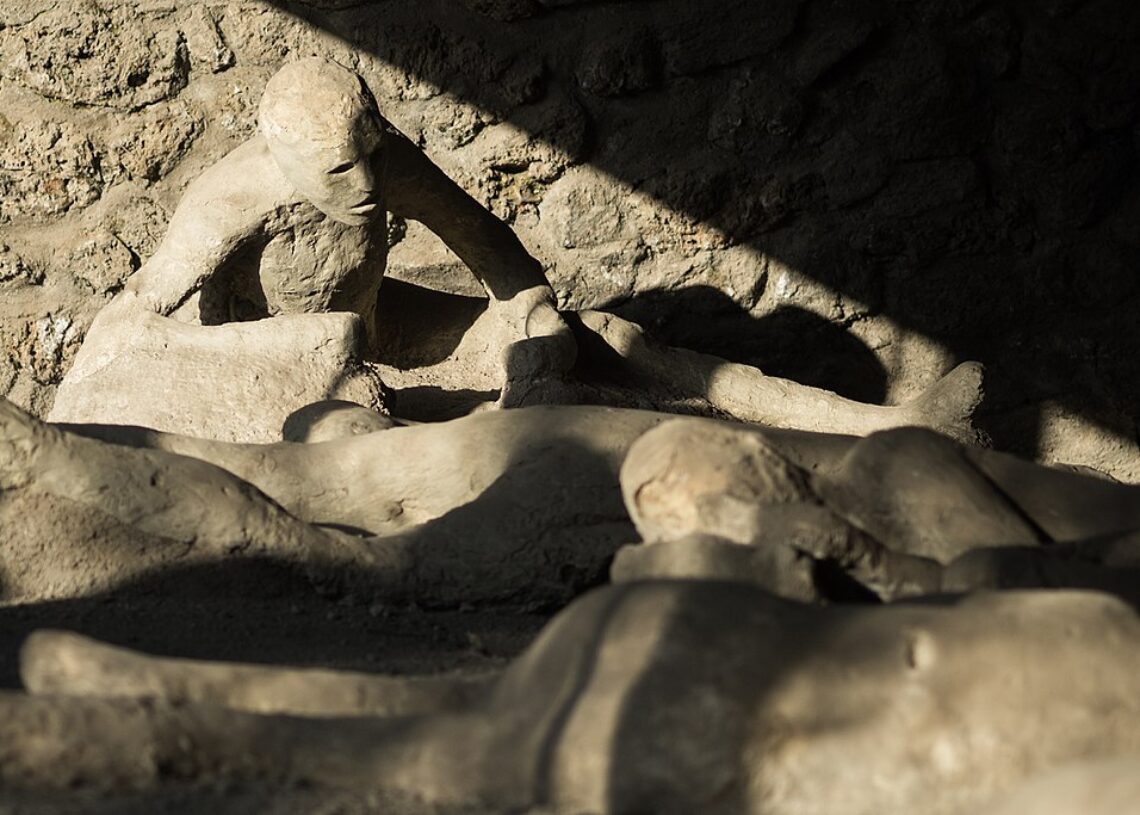Published today in Scientific Reports, an online peer-reviewed open access scientific journal, were the findings of Italian researchers who have mapped the DNA of a Pompeii resident for the first time. The geneticist Dr. Gabriele Scorrano from the University of Copenhagen, and the paleoanthropologist Dr. Serena Viva from the University of Salento, two of the paper’s authors, extracted DNA from the remains of a man. This discovery will pave the way for the genetic mapping of the ancient Roman city’s population that was buried and preserved by the massive and violent eruption of Vesuvius in 79 AD.
The remains of two humans that were analyzed came from the Casa del Fabbro (House of the Blacksmith). The study found that the male subject was about 35-40 when he was engulfed by the inferno, and according to the study, was suffering from an illness that researchers have identified as tuberculosis. The remains of the other subject indicate that she was a female in her 50s who suffered from arthrosis.
Until now, ongoing scientific research dating back to the nineteenth century has continued to be challenging because of the difficulty of extracting DNA that had been exposed to heat from the volcanic eruption. This study now finds that in fact, the DNA extracted from the adult male’s was instead preserved precisely as a result of the cloud of ash and lava fragments that carried through the air and that these factors helped to preserve his remains from environmental interference–such as atmospheric oxygen–which could have broken down and compromised the DNA. It would appear therefore, that his genetic material was preserved by the lava. The male victim’s remains were so intact that they were able to provide researchers with the first Pompeiian human genome.
The remains of the two subjects, first discovered in 1933, were found slumped in the corner of a room and according to Dr. Viva, they were not attempting at all to escape. Dr. Viva told BBC Radio 4’s Inside Science, “From their original position, it seems they were not running away from the danger of the eruption. We don’t understand their connection to the house, but anthropological analyses tried to understand why they were not fleeing, probably finding the answer in their health conditions […] Working on the victims of a natural disaster is an emotion that is difficult to describe. These people are silent witnesses to one of the most well-known historical events in the world.”
Dr. Scorrano, who was also a guest on Inside Science stated, “For sure he’s a local, it’s an individual from the Roman Imperial Age […] Regarding Pompeii, I think it’s really amazing to know how this population looks like because Pompeii is like a picture of 79 years after Christ, so we have a picture of this population at that time. […] We can get a lot of information, even like social stratification of kinship relationships between the different individuals found in different houses, and so on.” It is estimated that on the eve of the eruption, approximately 12,000 people inhabited Pompeii, and 2,000 perished on that fateful day.
The research also revealed the discovery of a group of genes commonly found in those from the island of Sardinia, which Dr. Scorrano stated would suggest there might have been elevated levels of genetic diversity across the Italian Peninsula at the time. According to Dr. Scorrano, there is a lot of material that can be used to understand what Pompeii was like at that time, and that these research findings have paved a path to new possibilities.












